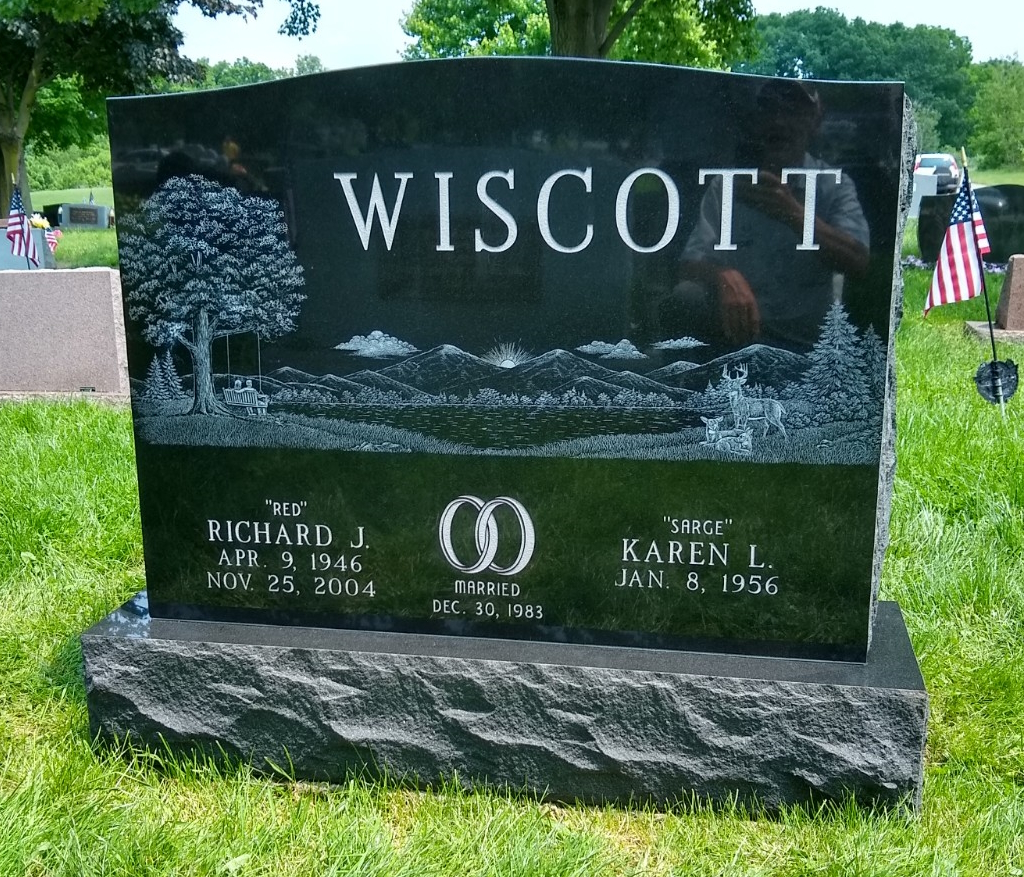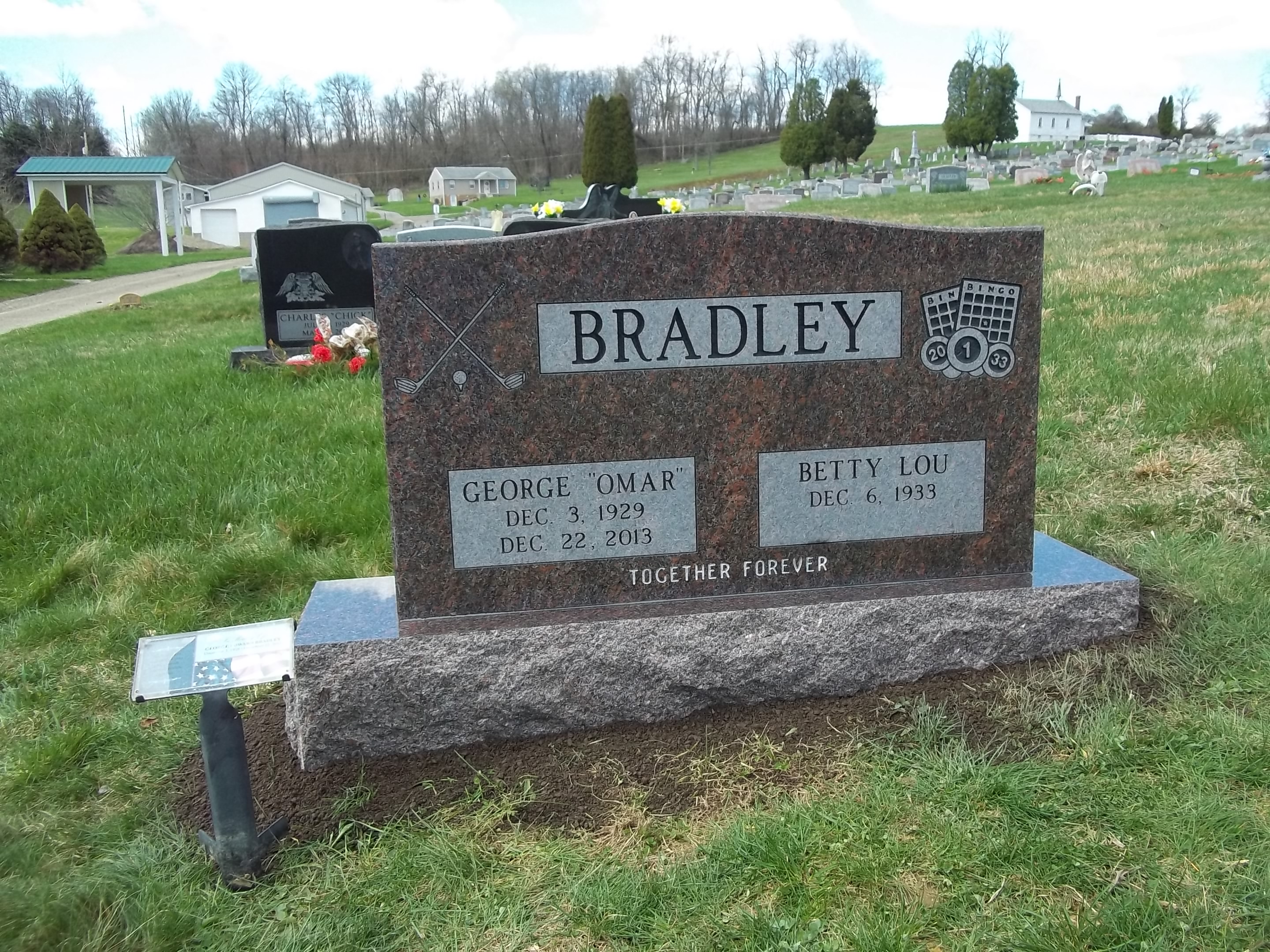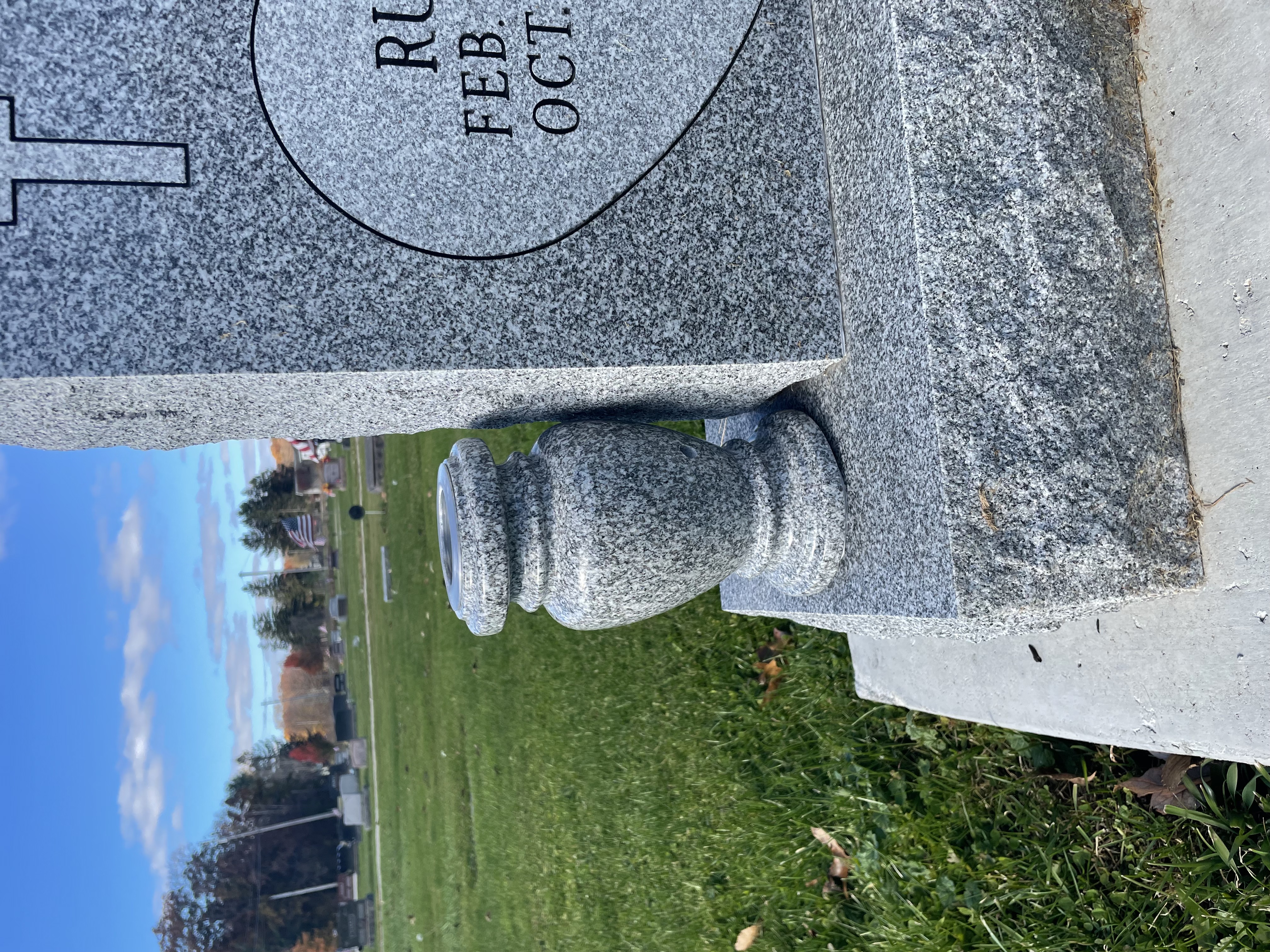Etching
Etching on granite offers several advantages and disadvantages that are crucial to consider when deciding on a memorial design. Etching provides unparalleled precision and detail in engraving intricate designs, texts, and even photographs onto granite surfaces. This level of precision allows for the creation of highly personalized and visually striking memorials. Etching also provides durability, versatility in design options. This allows for the customization of memorials with a wide range of fonts, graphics, and imagery. Whether commemorating an individual or depicting a meaningful scene, laser etching provides flexibility to capture unique expressions of remembrance. The cost of etching can be more expensive compared to traditional methods of engraving such as sandblasting. The technology involved in etching, along with the precision and detail it offers, contributes to its higher cost and maintenance. While etched granite is durable, it may require occasional cleaning and maintenance to preserve its appearance over time. Depending on the location and environmental factors, debris, dirt, or biological growth may accumulate on the etched surface, requiring upkeep to ensure clarity and legibility.


Sandblasting
Sandblasting creates a textured and three-dimensional effect on the surface of the monument, adding depth and character to the engraving. This technique can produce a tactile quality that enhances the visual appeal of the memorial. Compared to laser etching, sandblasting is often a more cost-effective method of engraving on granite monuments. The equipment and materials required for sandblasting are generally more affordable, making it a budget-friendly option for memorial design). While sandblasting can create texture and depth, it may not achieve the same level of intricate detail as etching. Fine lines, small text, and intricate graphics may be challenging to reproduce accurately with sandblasting, limiting design options for highly detailed memorials.) Exposure to harsh environmental conditions, such as rain, wind, and sunlight, may gradually wear down the engraved areas, potentially affecting legibility and clarity).
Ceramics
A ceramic on a monument is typically used to add a personalized touch or decorative element to a grave marker or memorial. These ceramic pieces are often in the form of a small plaque or tile featuring an image, such as a photograph of the deceased, religious symbols, nature scenes, or other meaningful artwork. They can serve as a lasting tribute, preserving memories and creating a sense of comfort for grieving family members and friends who visit the gravesite. Overall, ceramics on monuments serve as meaningful embellishments that contribute to the commemoration and remembrance of the deceased.


Vases
Including a vase on a monument allows for personalization and customization according to the preferences of the deceased or their family. Vases come in various shapes, sizes, and styles, allowing families to choose one that reflects the personality, tastes, or interests of their loved one. Having a vase on the monument provides a practical solution for keeping flowers upright and secure. It prevents flowers from toppling over or getting blown away by the wind, ensuring that floral tributes remain intact and presentable for longer periods. In summary, placing a vase on a monument offers a meaningful way to honor the deceased, enhance the gravesite's appearance, and provide a practical solution for displaying floral tributes.
